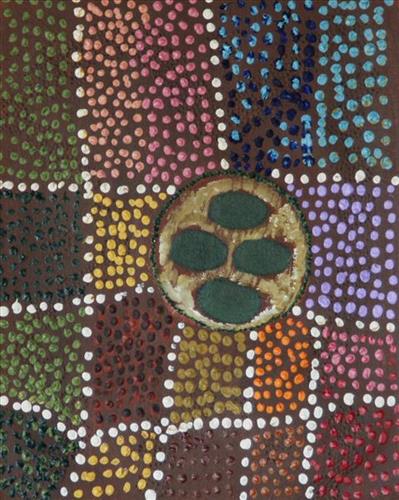111582259738
Emu Eggs
“These [are] emu eggs. In the spinifex. Wiluna. My mother’s side. They just look for those emu tracks, forwards and then going back. They follow them back to the nest. They know how to find them, emu eggs. And then eat them.”
-Shoshanna Jeffries
Depicted in this work are karlaya (emu) eggs; these are large, flightless birds endemic to Australia, and found across the whole country. Emus have been hunted by Martu people as a source of bush tucker from the pujiman (traditional, desert dwelling) era through to today. Typically, emus were tracked using their distinctive jina (tracks, footprints). Acute skill in track observation and identification traditionally possessed by Aboriginal people developed directly in relation to their past hunter-gatherer existence, when survival depended in large part on the successful tracking of hunted animals. In the absence of an actual animal sighting, tracks act as an identifier that an animal was present, which were then followed to the animal’s location.




